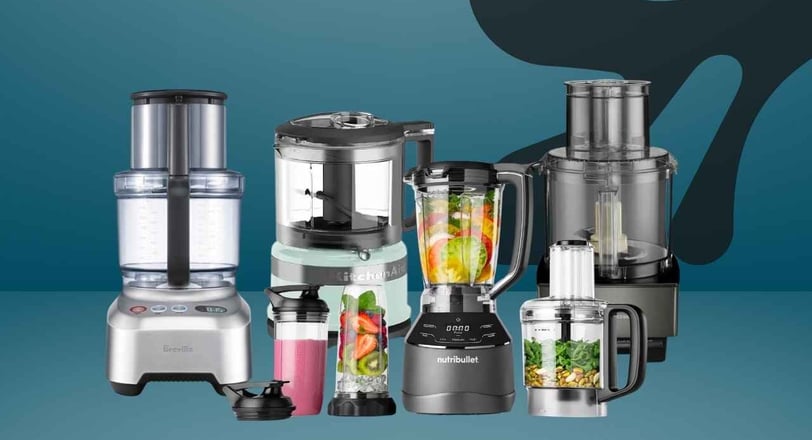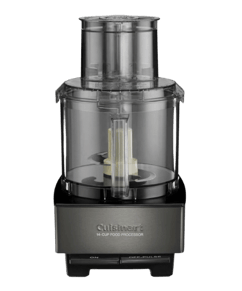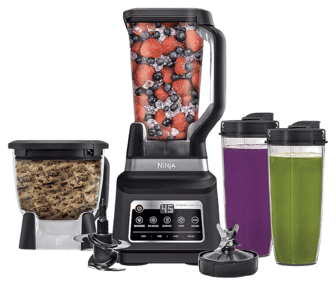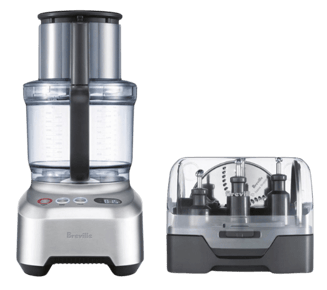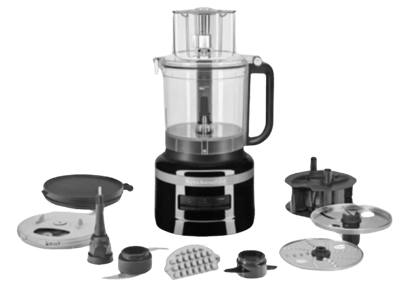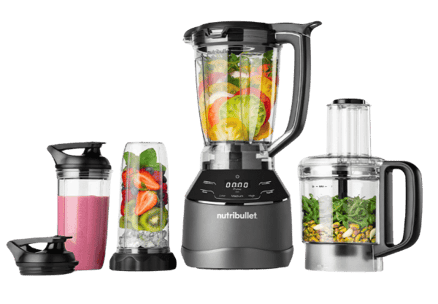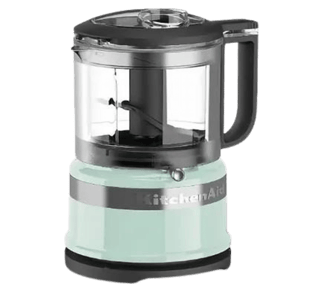Food Processor
Let’s chat about food processors – one of the most versatile tools you can have in the kitchen. Whether you’re making pesto, salsa, or your favorite dip, a food processor can save you tons of time. Instead of chopping, slicing, or shredding manually, it does the hard work for you. So, if you’re like me and want to spend less time prepping and more time enjoying your meals, this is one kitchen tool you need.
Even professional chefs swear by them! Juan Ocampo, an executive chef at Village Vine, says, “Food processors are versatile and essential for any kitchen.” I couldn’t agree more. Let’s look at some of the top food processors, along with their pros and cons.
Cuisinart Food Processor
A Classic Choice
The Cuisinart DFP-14BSKY is perfect if you’re cooking for large groups or like to batch-cook. With a 14-cup capacity, it’s designed for big jobs. It has a simple design, so no need to mess with complex controls. Plus, it’s easy to clean, which is always a win!
Pros:
✔ Large capacity for batch cooking
✔ Simple, user-friendly design
✔ Easy to clean
Cons:
✖ Assembling the discs can be tricky
This processor is excellent for everything from chopping onions to slicing tomatoes. Its sturdy base ensures it won’t move around during use, and the large feed tube is great for bigger items like potatoes.
Ninja Food Processor
Budget-Friendly and Versatile
For a more affordable option, check out the Ninja Professional Plus. Despite the lower price, it’s surprisingly versatile with multiple speed settings and attachments for chopping, slicing, and even dough kneading. Everything but the base is dishwasher-safe, making clean-up a breeze.
Pros:
✔ Multiple speed settings and attachments
✔ Affordable
✔ Dishwasher-safe parts
Cons:
✖ Not efficient with small amounts of food
✖ Cheese can get stuck in the lid
While the Ninja is great for larger amounts of food, it struggles with small portions, and sometimes food gets stuck under the blades. But for the price, it’s still a solid option.
Breville Food Processor
The All-in-One Workhorse
The Breville Sous Chef is the king of food processors. It comes with a ton of attachments, including specialized blades for making French fries, dicing, and even peeling! It also has a large 16-cup capacity and a separate mini-bowl for smaller jobs.
Pros:
✔ Huge capacity and multiple attachments
✔ Precise slicing, shredding, and dicing
✔ Dishwasher-safe parts for easy cleanup
Cons:
✖ Expensive
✖ Lots of parts to keep track of
If you’re willing to spend a bit more, the Breville Sous Chef offers almost every food prep function you can imagine. However, it’s definitely not cheap, and there are a lot of attachments, so storage can be an issue.
KitchenAid Food Processor
Best for Dicing and Grating
KitchenAid is known for its reliable appliances, and their 13-Cup Food Processor is no exception. It’s simple to use and comes with a dicing kit. The results are pretty impressive when it comes to grating cheese, slicing zucchini, and even making aioli.
Pros:
✔ Great for dicing, slicing, and grating
✔ Intuitive design
✔ Dishwasher-safe parts
Cons:
✖ Struggles with chopping onions evenly
This food processor works well overall, but chopping onions can be hit-or-miss. Sometimes it purees some pieces while others come out perfectly chopped.
NutriBullet Food Processor
Budget-Friendly Option
NutriBullet may be known for its blenders, but the NBP50100 Food Processor is also a budget-friendly choice. It’s simple, intuitive, and easy to clean, making it ideal for quick food prep. However, it did stain slightly after mincing herbs.
Pros:
✔ Affordable
✔ Intuitive design
✔ Dishwasher-safe attachments
Cons:
✖ The bowl stained after use
Despite the minor staining issue, this is a great option if you're looking for something on the lower end of the price spectrum.
KitchenAid Food Chopper
Small But Mighty
If you have a smaller kitchen or don’t need a full-size processor, the KitchenAid 3.5-Cup Food Chopper is a great option. It’s small, efficient, and gets the job done for smaller tasks. Plus, it’s budget-friendly!
Pros:
✔ Compact size, great for small kitchens
✔ Efficient and quick
✔ Low price
Cons:
✖ Limited capacity
✖ Only comes with a chopping blade
While it’s great for small jobs, the limited capacity means you’ll need to make multiple batches if cooking for more people. It also lacks additional attachments, but for the price, it’s a fantastic little helper.
How We Tested the Food Processors
To choose the best models, we tested 20 top food processors by chopping onions, slicing zucchini, shredding cheese, and kneading dough. We also checked how easy they were to clean and how intuitive they were to assemble. Models that were dishwasher-safe scored extra points for convenience.
Your Go-To Guide for Best Coffee Makers:
Best Coffee Maker of 2024: Tested and Reviewed ↗
For More Articles Check: KoolKitchen.pk
Food Processor vs Blender
What’s the Difference?
Both food processors and blenders are versatile kitchen tools, and while they can sometimes swap roles, it’s best to use each for what they do best. That way, you avoid issues like spills when blending soup and get the best results from each tool.
Key Differences
Chopping: Both appliances can chop, but food processors do it more evenly, and they’re gentler on delicate herbs, preventing bruising.
Purees: Whether it’s hummus, salsa, or nut butter, a food processor handles purees more efficiently. It uses less liquid and makes it easy to scrape out every last bit.
When to Use Each
Blender for Soups: Don’t use a food processor for soups. It’s not leakproof like a blender and may overflow. Plus, some food processor blades don’t stay in place when transferring ingredients.
Ice Crushing: Skip the food processor for ice—it’s tough on the blade and motor, and you risk the machine jumping around.
Unique Functions
Shredding & Slicing: Blenders usually don’t come with slicing or shredding attachments, while food processors excel at this.
Dough Making: You can make dough in both, but food processors provide more consistent kneading results.
Meat Chopping: For even results and easier cleanup, food processors are better for chopping meat.

